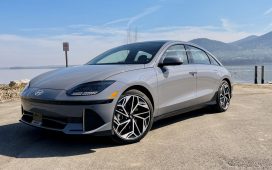BMW, famed German automaker and parent company to Mini and Rolls-Royce, announced its intention to adopt Tesla’s electric vehicle charging standard for its future EVs, in the latest win for Elon Musk’s company.
BMW said that owners of electric vehicles with the Combined Charging System (CCS) outlet will get access to Tesla’s Supercharger network in early 2025, most likely through the use of an adapter. BMW will also start producing EVs with Tesla’s charging standard built into the vehicle that same year.
BMW said that EV owners will get access to Tesla’s Supercharger network in early 2025
BMW joins a long list of other companies that have adopted Tesla’s so-called North American Charging Standard, or NACS. They include Ford, GM, Rivian, Volvo, Polestar, Nissan, Mercedes-Benz, Jaguar Land Rover, Fisker, Hyundai, and Kia.
But not everyone is on board… yet. The holdouts include three of the biggest automakers in the world: Volkswagen, Toyota, and Stellantis.
Until recently, Tesla Superchargers were exclusive to Tesla owners. In fact, it was one of Tesla’s main selling points: consistent, exclusive, and abundant EV charging. But that began to change several years ago when the company started offering access to non-Tesla EVs —first in Europe and then in the US after the Biden administration said it would be a prerequisite to tap into some of the $7.5 billion for EV charging in the Bipartisan Infrastructure Law.
Tesla’s Supercharger network is widely recognized as superior to many of the third-party EV charging stations, most of which feature CCS plugs and the less utilized CHAdeMO charging standard. The company says it has 45,000 Superchargers worldwide, 12,000 of which are located in the US.
And while other EV charging stations struggle with software glitches and faulty chargers, Tesla says its Superchargers are nearly perfect in their reliability. The company says that the average uptime of Supercharger sites last year amounted to 99.95 percent, down marginally from 99.96 percent in 2021.











